The key to gardening success in the northeastern U.S., with its variably cold, snowy winters and short, humid summers, is choosing plants already adapted to the local climate and soils, as well as the specific conditions in your yard. By learning to read the varied conditions of your landscape — and you may have multiple habitats that are very different from one another — you can then look for plants that grow naturally in those conditions without needing water over the average 40 to 60 inches of annual precipitation in this region.
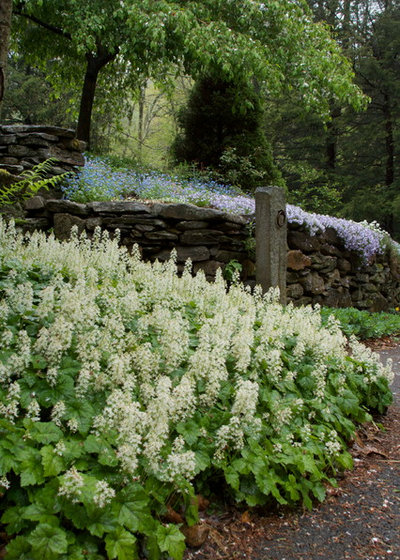
Ellen Sousa/Turkey Hill Brook Farm
Not in the Northeast? Browse plants native to other regions of the U.S.
Instead of impulse-buying plants that strike your fancy in bloom at the nursery, first take a good look at what you have to work with.
Lots of shade from trees and buildings? Choose Northeast natives such as foamflower and serviceberry, which happily bloom in the shade underneath trees.
Sandy soil in full, blazing sun where nothing seems to grow well without constant fertilizer and water? Look for native-plant nurseries selling butterfly milkweed and New Jersey tea. Both are important wildlife plants, feeding a diversity of pollinator species, including the endangered monarch butterfly, but they’re rarely seen in the wild because the sandy, well-drained soils they like to grow in make for perfect areas for development.
Residential landscapes are now one of the few places you are likely to see some of these beautiful plants, so incorporating them into your landscaping can help maintain their valuable attributes for generations to come.
10 Plants for Interest All YearHere are 10 plants, from herbaceous perennials to woody vines, shrubs and trees, chosen for their multiseason beauty and interest, wildlife value and adaptability to a variety of garden conditions found across the Northeast, from dry sun to moist shade. Other than irrigation in their first year or two and an annual weeding, once these plants are established in conditions to their liking, they should require little else to thrive in your Northeast landscape.
Foamflower(
Tiarella cordifolia)
Native to rich Eastern forests and woodlands
Best shade perennial. Foamflower, shown here, is a beautiful semievergreen ground cover that blooms in a sea of pink and white foamy flowers in spring. Fairly deer resistant (definitely not a deer’s first choice), it is perfect for growing in shady areas underneath trees or in the shade of a house. In rich soil, foamflower can spread annually a few feet in each direction from stolons (underground roots), but it is never invasive like
Vinca and Japanese pachysandra (
Pachysandra terminalis), commonly planted ground covers that can escape into nearby woodlands.
Choose spreading varieties if you’re looking for a ground cover effect. Named cultivars found in nurseries are often labeled incorrectly as
Tiarella cordifolia and are actually the clumping Appalachian species,
Tiarella wherryi. These don’t spread from underground stolons, so read labels carefully if you prefer a spreading plant to fill an area.
See how to grow foamflower
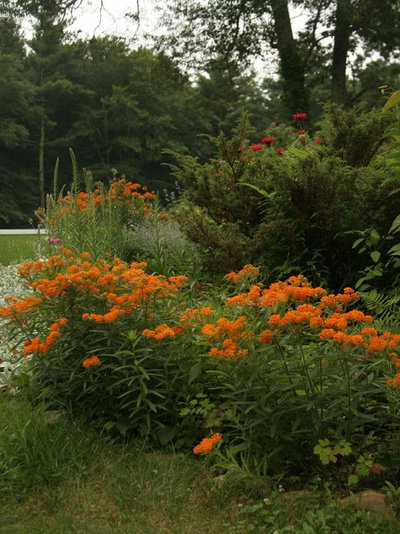
Ellen Sousa/Turkey Hill Brook Farm
Butterfly Milkweed(
Asclepias tuberosa)
Native to open, sandy soils and uplands across eastern North America, but a rare species in most New England states
Best full-sun perennial for sandy or well-drained soil. This gorgeous native plant sports neon-orange blooms in early summer, attracting many butterflies and pollinators to its sweet nectar. Butterfly milkweed thrives in any sunny spot with well-draining soil, especially sand. As a milkweed, it’s an occasional food plant for monarch butterfly caterpillars, although swamp milkweed (
Asclepias incarnata), which leafs out and blooms later than the orange milkweed, is preferred as a host plant.
See how to grow butterfly milkweed
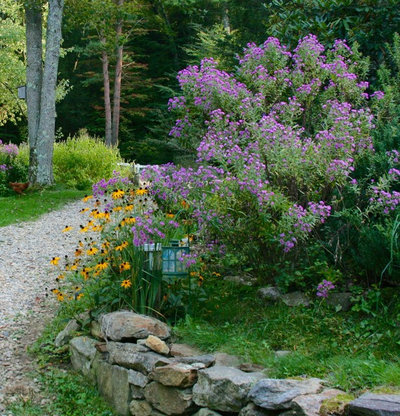
Ellen Sousa/Turkey Hill Brook Farm
New England Aster(
Symphyotrichum novae-angliae)
Native to moist meadows and fields on the East Coast and south to Virginia
Best full-sun perennial for moist soil and late-season blooms. The purple flowers of New England aster, along with goldenrod (
Solidago spp), signal the summer’s end here in the Northeast. An important nectar and host plant for butterflies and late-season beneficial insects, it loves full sun and moist soil, but it will put on a great show in any reasonable garden soil. Allow it to self-seed and create large drifts of fall color, and watch for monarch butterflies drinking nectar from the flowers, essential fuel for their long flight south to Mexico.
See how to grow New England aster
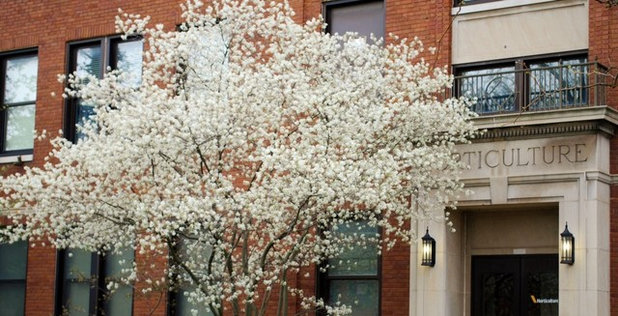
GardenArt
Serviceberry(
Amelanchier spp)
Some species are native to low woods and swamps, and others are adapted to high and dry exposed areas
Most adaptable flowering shrub. Serviceberry, also called shadbush, shadblow and juneberry, is a beautiful multistemmed shrub or small tree that grows in sun or the understory of larger trees. Clouds of white flowers cover serviceberry in April, and the early-season nectar is valuable forage for many pollinators. Birds flock to feed on the pink and purple edible berries that ripen in June. The fall foliage is a striking orange and yellow, especially when grown in the sun. Plants sold in nurseries are usually natural hybrids of local species.
See how to grow serviceberry
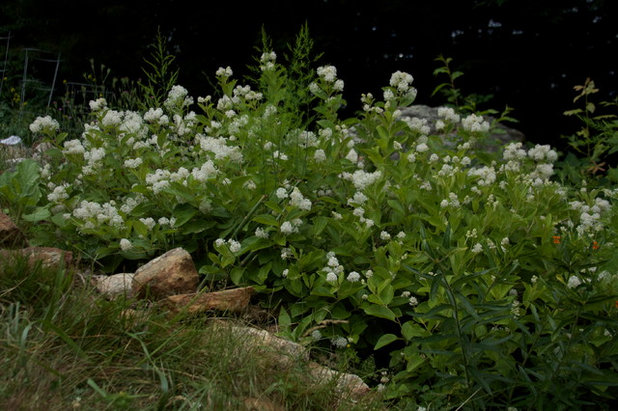
Ellen Sousa/Turkey Hill Brook Farm
New Jersey Tea(
Ceanothus americanus)
Native to sandy pine barrens and rocky soils of eastern North America
Best full-sun shrub for dry soils. This shrub makes it into the top 10 for its ability to thrive in the leanest and driest soils without wanting or needing fertilizer or watering. Planted in these conditions, it’s as close to a zero-maintenance flowering shrub that exists in the north. Billowy, white early-summer blooms attract hordes of pollinators and beneficial predatory insects that help control garden pests. New Jersey tea is hard to find for sale; look for it at native-plant nurseries in your region.
See how to grow New Jersey tea
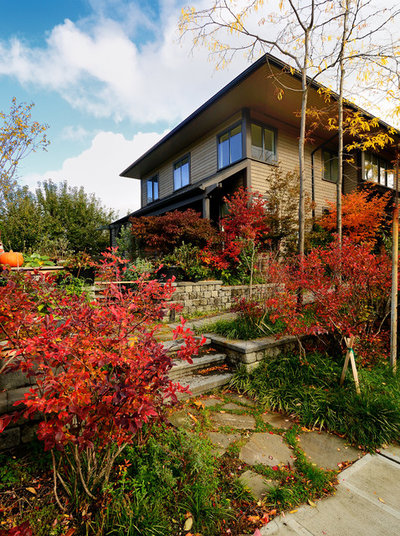
Studio Ectypos
Highbush Blueberry or
Lowbush Blueberry(
Vaccinium corymbosum,
Vaccinium angustifolium)
Native to a variety of habitats, ranging from swamps and bogs to woods, fields and rocky outcrops
Best edible plant. Blueberry is an essential Northern garden plant because of its delicious berries, fiery fall foliage and, depending on the species, ability to grow just about anywhere with some sun.
See how to grow highbush and lowbush blueberry
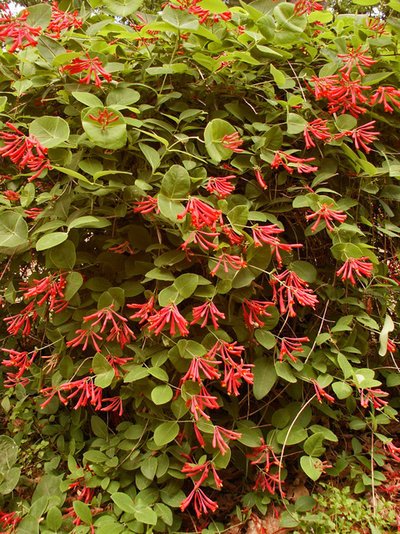
Ellen Sousa/Turkey Hill Brook Farm
Trumpet Honeysuckle(
Lonicera sempervirens)
Native to forest edges, woodlands and ledges in southern New England and south
Best flowering vine. Trumpet honeysuckle, also called coral honeysuckle, is a well-behaved flowering vine that attracts hummingbirds and won’t take over your house or yard the way Asian wisteria (
Wisteria sinensis or W. floribunda) or English ivy (
Hedera helix) can. Trumpet honeysuckle is perfect for twining up an arbor or along a fence line.
Important note: Don’t confuse trumpet honeysuckle with trumpet creeper (
Campsis radicans) or crossvine (
Bignonia capreolata), which are also vines with trumpet-shaped flowers but should be avoided, due to their aggressive spreading through underground runners.
See how to grow trumpet honeysuckle
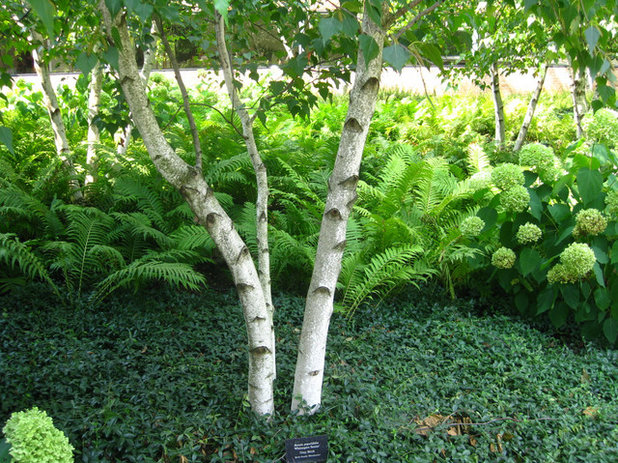
Michael Banys Artwork
Gray Birch(
Betula populifolia)
Grows wild in abandoned fields and disturbed areas of the East
Most adaptable small tree. Gray birch is an attractive and fast-growing tree for sun or shade, wet or dry soil. It’s more resistant than other birches to the bronze birch borer pest. Grow gray birch to add quick and easy wildlife habitat to your property — its seeds and catkins feed birds, and its foliage hosts many butterfly and moth caterpillars, which in turn become a protein-rich food that birds use to feed their babies in the nest.
See how to grow gray birch
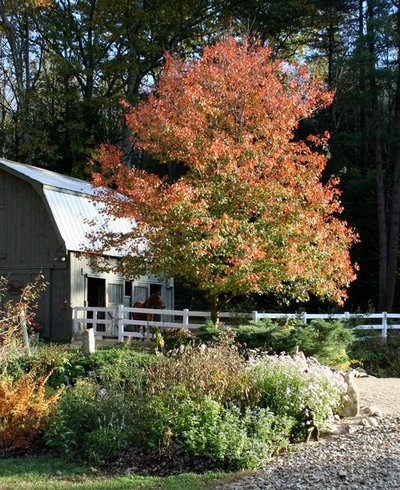
Ellen Sousa/Turkey Hill Brook Farm
Red Maple(
Acer rubrum)
Native to swamps, forests, fields, and river and wetland edges
Most adaptable large tree. Grow red maple, also called swamp maple, for its fast growth when young and its multiseason interest. Its red flowers in early spring feed native bees, and its brilliant orange and red fall foliage rivals the iconic colored foliage of sugar maples, which are beginning to die out due to a warming climate.
See how to grow red maple
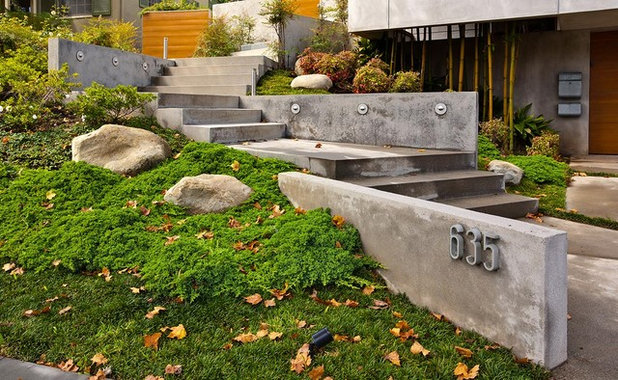
MGS Architecture
Creeping Juniper(
Juniperus horizontalis)
Native to dunes and sandy, gravelly or rocky outcrops, often seen growing on highway embankments
Best evergreen ground cover for full sun and dry soil. What it lacks in showy blooms, juniper makes up for with its tough disposition, growing in the toughest, driest soils. Its low, spreading habit creeps nicely around rocks and into awkward spaces, highlighting nearby showy plants and unifying landscape designs large and small. Easily the most drought-tolerant evergreen ground cover for Eastern gardens, juniper grows in any well-drained soil in full sun, including sand and on steep slopes.
Learn how to grow creeping juniper





